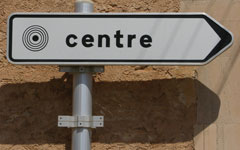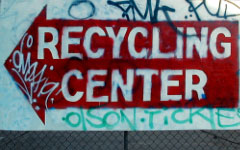URBAN COMMUNICATION | SIGNS AND SIGNALS | STADTGESPRÄCHE






This website focuses on the importance of public space for the exchange of information.
The ability and necessity to exchange ideas and concepts is essential for every democratically minded society. For a long period of time, the active social life was concentrated in the center of cities. This was the stage for conflicts of interest, the arena where human abilities and possibilities could be presented. What kind of space is available for people today so that they can present their concerns, wishes and ideas?
What we know about our society and the world in which we live, we know through the mass media or through direct experience. Media is the bridge to our own past experience and the knowledge of others. What do we actually know without textbooks, newspapers, radio or television about the world? Despite the increasing importance of different media channels, the public space still plays a crucial role in the powerful and effective presentation of certain interests. Here people fight for recognition, occupy areas and demonstrate their intentions. Access to other media is often limited. The public space is open to all people equally. The methods how we communicate are changing through the use of different media. We adapt to the media.
If visual attention is viewed as a currency, then people start to fight for space and legitimation to place visible signs in public space. Positive social relationships end where there is no room for negotiation. This battle for attention appears to us as also as a battle of the use of materials. Especially at night, when the urban cities sink into darkness, those characters reach our attention, that waste a lot of energy. When we try to evaluate the importance of signs, we pay attention to their size, frequency and the material cost of production. Today, in many streets and on a number of places traffic dominates the scene. The signs we can find there seem to be adjusted according to these conditions. They make noise to be heard. The battle for visibility is conducted everywhere, often with incredible brutality.
Urban space gets transformed today into a consumable, tourist area, for entertainment, leisure, shopping, sightseeing, adventure. The vitality of a city manifests itself especially in those forms of expression that are not created to last for ever, but transport the latest news. Like no other medium the layers of meaning can overlap. It is not to overlook that issues, that yesterday appeared to us as inevitable, today sometimes have lost all meaning.
What is the impact of environmental design on our social life?
As we move into an unknown area, we orient ourselves by trying to decipher the meaning of the structural body of the environment and the signs thereon as well as the observable forms of human interaction.
When we look now at the graphic elements we are finding at almost every corner in our urban surroundings, we make the experience that we don’t read these signs like books. The whole scene gives us a first impression. Generally we start to analyse the overall context. Is this a dangerous or a pleasent place to be? What options can we take here and what is forbidden. The city is like a container where in all its complexity and diversity, the interests, passions and tastes of citizens flow together and can be socially experienced. Before we start to read and begin to ask for the importance of these messages, we are looking for higher-level clues. What is telling us the general condition of the environment? What does it tell us about success or failures, hopes and dreams, carefulness or unkindness, poverty or prosperity, optimism or despair? No other medium allows such a rapid insight into the general state of mind.
How do we measure that? We believe that the material nature of the surfaces is revealing many of the secrets otherwise hidden in the dark. The tactile and visual qualities of the signs in our cities are very important sources of information. The haptic qualities of signs can be interpreted as the bodylanguage of urban communication. However, it does not behave in such a way that the individual materials can be assigned to specific contexts of meaning. But when someone, for example, takes the effort to assemble letters made out of metal on a marble figure, then this probably does not happen to put a momentary sign – we rather should not forget something for ever. For the interpretation of a sign, however, the context is always just as important as its shape and material manifestation. The impact of signs on our emotions are the result of complex interpretation processes. Expectations and habits play in those situations a crucial role, as well as the overall impression, that we gain from lighting effects, temperature, noise, and so on.
In the end we have nothing else but our own body, to perceive the world with our senses, filtered through our brains. Therefore, it is worth to remember that the majority of all signs that we put in the world, should serves only one purpose, to make life worth living.




